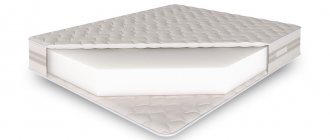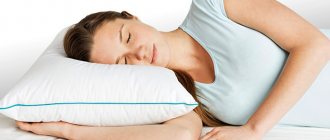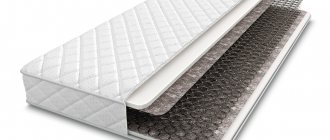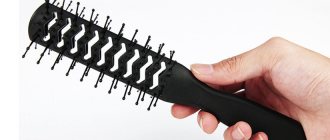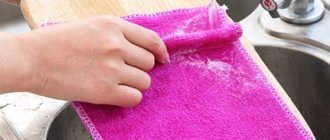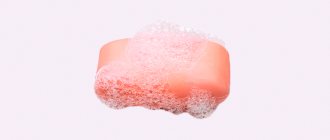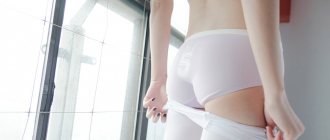Each of us regularly washes and changes bed linen. However, not many people think about changing their bedding. Meanwhile, pillows and blankets accumulate many harmful and dangerous bacteria every day, which negatively affect human health. Therefore, experts recommend regularly cleaning and ventilating, as well as periodically changing these products. Let's figure out how often you need to change pillows and blankets.
Your spine is out of alignment when you sleep
No matter how old (or new) your mattress is, if it's not comfortable, you won't get a good night's sleep. If you sleep on your back or stomach, your spine should be in an "S" shape. A spine that is too straight or too arched means that the mattress is not aligning it properly.
Patlakh is no longer in “Dancing”: why Denisova’s favorite was kicked out, what does he do
The Bank of Russia announced the release of banknotes of a new design
Giant obsidian “blade”, 20 thousand years old, discovered in China
For side sleepers, the spine should be straight from the neck to the bottom. A good pillow can fix minor problems, but if you can fit your hand into the gap between your body and the mattress, that's a big sign that you need a different mattress.
Rules for caring for pillows
To preserve the life of the product for a long time, it is necessary to take into account some rules:
- don’t be lazy after waking up, beat and turn over;
- do not make the bed immediately after waking up; the pillows need to air out;
- do not forget to take the products out into the fresh air every month;
- monitor humidity, the humidity level should not increase above 60%;
- ventilate the room daily;
- wash the product according to the manufacturer's instructions;
- Natural products must be chemically treated every year.
Compliance with operating rules and timely replacement of bedding after the expiration date will help preserve your health for many years.
You wake up feeling stiff
Poor sleep can contribute to chronic back pain. If your back pain gets worse when you wake up but subsides when you stretch and move, it's a sign that your mattress is causing the pain.
It may also be worth giving up hard mattresses. Studies have shown that medium-firm mattresses provide better comfort for chronic low back pain. Experts recommend trying different types of mattresses before purchasing them if you experience pain while sleeping or waking up.
Why does the pillow need to be replaced?
Our grandmothers passed down pillows from generation to generation. Why can’t we leave to our future grandchildren the product we sleep on today?
Firstly, a pillow is a comfortable haven for millions of bacteria, armadas of dust mites and a storehouse of dust with dead flakes of human skin. All this is diluted with dirt, oil from our hair and bodies and tick excrement. It turns out to be a completely unsightly picture. People suffering from allergies already understand what we are talking about. For those who are not familiar with allergic manifestations, it will be interesting to know that an unreasonable morning cough is caused by uninvited “neighbors” of the pillow filling. But not a viral disease.
And further. Acne in teenagers is no surprise. But the appearance of acne in adults is very often triggered by an old pillow.
Secondly, an old, dented, matted pillow causes problems with the cervical spine. Because the neck is not supported properly while sleeping. The pillow should fill the space between your head and shoulders and support your neck.
As you can see, the arguments for replacing pillows are more than compelling. After all, they concern our health, which, as we know, cannot be saved on.
Worsening of allergies or asthma
Your mattress may be the cause of allergy or asthma symptoms as it accumulates dust over time and harbors dust mites. They are not dangerous in themselves, but if you have allergies, dust mites can aggravate allergic reactions and asthma attacks. To relieve symptoms, you can try removing dust and mites from your mattress by vacuuming, steaming, or beating. If this does not help, then you may need to buy a new mattress.
Vaccination and other rules for entry into Montenegro have become much easier
On Skotnik (March 27) you can’t eat meat: what else is prohibited on this day
An old stepladder, potted flowers and an armchair: how to turn a balcony into a cozy place
Top 10 most durable pillows
We have collected 10 durable pillows that will last at least 7 years, and at most more than 15.
Pillow medium Luxury Silk Grass
Pillow medium Luxury Silk Grass natural silk
An expensive, durable pillow made of natural silk can be used for 15 years. All this time it will be like new - the silk does not cake or bunch up. It remains tender, airy, soft and very pleasant. If you divide the cost of a pillow by its service life, it turns out that natural silk is not so expensive - 1000 rubles for a year of use. Cheap models, but requiring constant replacement, cost the same amount.
| Average | Classical | 2 sizes | On the back |
Pillow MaterLux Assia
MaterLux Assia pillow made of natural latex
https://mnogosna.ru/podushki/materlux-podushki/materlux-assia/
Natural latex will last 12 years. All this time it will remain the same elastic and springy. An orthopedic pillow supports the cervical spine in the correct position and helps maintain correct posture.
| Soft | Anatomical | Latex | On the side | On the back |
Lonax Middle Latex
Lonax Middle Latex 12 cm
A medium-hard model made of natural latex adapts to the shape of the head and neck, creating a comfortable sleeping place. The material is perforated, so it is well ventilated, dust does not accumulate inside and conditions for the growth of bacteria are not created.
| Average | Standard | Latex | On the side | On the back |
Tempur Millennium Small
Tempur Millennium Small adapts to body shape
Advanced memory foam will last at least 11 years. The material reacts to temperature and takes the shape of the human body without resistance. Tempur does not put pressure on soft tissues and does not interfere with normal blood flow.
| Soft | Anatomical | Memory effect | On the side | On the back |
FreeDream Fresh L
This is what the FreeDream Fresh L orthopedic pillow with a cooling effect looks like.
Foam with the addition of natural soybean oil is a durable material that has shape memory and creates a comfortable surface for sleeping. A layer of Viscool soy foam removes excess heat deep into the material, so the surface always remains a little cool. This is both pleasant and healthy.
| Average | Standard | Soy foam | Cooling | On the back |
BeautySon Memory Plus
BeautySon Memory Plus model with light massage effect
Memory foam lasts at least 8 years. The orthopedic wave shape will especially appeal to people who have to spend a lot of time sitting, and whose neck hurts and becomes stiff as a result. The pillow supports the cervical spine in the correct position, removes clamps, and normalizes blood circulation.
| Soft | Anatomical | Memory effect | On the side | On the back |
Lonax Memory Elastic Classic Pillow
Lonax Memory Elastic Classic Pillow Prevents Premature Wrinkles
Another memory model will appeal to women over 30 years of age, since memory shapes take the shape of the human body without resistance and do not put pressure on soft tissues. People who sleep on a memory pillow do not develop premature wrinkles.
| Soft | Standard | Memory effect | On the side | On the back |
Mediflex Revolution pillow
Mediflex Revolution natural latex pillow
Comfortable pillow made of natural crushed latex in the shape of spirals. When loaded, they spring a little and create a comfortable surface for sleeping. Latex is a hardy, durable material. The pillow will last about 7 years with intensive use.
| Average | Standard | Latex | On the side | On the back |
Three-layer elastic down pillow Natures Men's World
Three-layer elastic down pillow Natures Men's World with different hardness on both sides.
The model consists of three blocks. Inside are 2 capsules of small feathers of weak and dense filling. On one side the pillow is softer, on the other it is elastic. The feathers are covered with light, delicate down. The model is suitable for sleeping in different positions.
| Average | Classical | 2 sizes | Down and feather | On the back |
Elastic pillow Natures Ruja down and down-feather
Natures Ruja down and feathers will last 15 years with proper care
The elastic, comfortable down pillow was only ranked 10th, which is not entirely fair. In fact, a pillow can last 10 or 15 years if you care for it properly - dry clean it every 2 years, change the pillowcase at least every 5 days. If this is not done, the service life of the down pillow will be 5 years.
| Moderately hard | Classical | 2 sizes | Down and feather | On the back |
You have gained or lost weight
Significant weight loss or gain will negatively impact the effectiveness of your mattress. According to Canadian research, too little or too much sleep may be linked to your weight gain.
People with more weight wear out their mattresses faster. Additionally, if you previously slept alone, but now have another person sleeping in the same bed, your mattress may not be able to support the additional weight and may begin to sag. This means it's time to buy a new mattress.
What types of pillows are there?
What the inside of the pillow is filled with depends on how long it can be used. This may be due to the hardness of the material, allergenicity, or beneficial properties.
Pillows consist of natural fillings (rice and buckwheat husks, wool, silk, bamboo and soy fiber) and synthetics (sintepon, silicone, holofiber, etc.).
Signs that it's time to change your pillow
Not only the mattress, but also the pillows need to be changed periodically. If you notice any of the following signs, it's time to get a new pillow:
- Lumps of filler can be felt inside the pillow.
- Permanent stains of sweat and sebum are noticeable.
- You wake up with pain, especially in your neck or shoulders.
- You wake up tired.
- You wake up with headaches.
- You wake up sneezing from dust mites.
- You should constantly re-fluff your pillow to make it more comfortable to sleep (applies to down pillows only).
- If you fold a pillow in half, it will stay folded instead of flattening out (applies to down pillows only).
Sometimes pillows need to be changed not only because they are old. Other factors that indicate the need to change your pillow include health conditions (such as allergies) or a change in sleeping position.
How long can you use the orthopedic option?
Orthopedic pillow, how often to change this product? Latex-based pillows are considered an orthopedic option. They are very easy to use and do not need to be cleaned as often. They are not allergenic and do not accumulate harmful dust.
Insects will never live in latex. However, it is worth considering how often the orthopedic pillow needs to be changed. If you use it correctly, it will serve you for at least 10 years.
Although the benefits of orthopedic pillows are undeniable, such products are quite expensive, so they are not so often found in bedrooms.
Lifespan of different pillows
On average, pillows need to be changed every 1-2 years. Some types of pillows last longer than others due to the quality and construction of their materials.
In the table you can see how long a pillow of one type or another will last you.
| Filler | Lifetime |
| Latex | 3-4 years |
| Buckwheat | 3 years |
| Feather | 18-36 months |
| Memory foam | 18-36 months |
| Pooh | 2 years |
| Synthetic down | 18-24 months |
| Polyester | 6-24 months |
Found a violation? Report content
How to care?
For a pillow with any filling, you need to change the pillowcase once every three days. We give general care recommendations; see the exact manufacturer's requirements on the label of your model.
- Down and feather pillows should be dry cleaned every two to three years. Do not use in rooms with high humidity, as this will cause the down to deteriorate.
- Do not wet memory models; it will be difficult to dry them. Vacuuming is enough, not washing.
- Natural latex also requires regular vacuuming. The material is perforated, so a vacuum cleaner can easily remove all dirt from the pillow.
- Artificial swan down and bamboo fiber can be washed in a washing machine once a year, hand-wrung.
- Silk can be carefully washed by hand at home, but since it is an expensive, delicate material, it is still better to have it dry cleaned. This will increase the shelf life of the product.
How long does a holofiber pillow last?
Ease of care. Machine washable at temperatures up to 50°C. Durability. With proper care, pillows can last up to 10 years.
Interesting materials:
How many kilograms are in kilogram force? How many kilograms of oyster mushrooms can be collected from one block? How many kilocalories are there in 100 g of corn sticks? How many kilocalories are there in 20 g of sugar? How many kilometers from Domodedovo airport to the center of Moscow? How many kilometers from Kaliningrad to the German border? How many kilometers is the radius of Moscow? How many kilowatts is enough for a private home? How many kilowatts are there at the dacha? How many kilowatts are required for a residential building?
Unlike food, determining the lifespan of bedding or blankets is not as easy. There are no special regulations that would determine the shelf life of bedding at home. Manufacturers set the service life of products, focusing on average operating conditions and wear resistance of materials. In addition, the label often contains the inscription: “expiration date is unlimited.” But does this mean that sleep textiles can be used indefinitely?
The shelf life, or rather the service life, of home textiles is conditional. And the main reason for this is the inability to predict in what conditions this or that item will be used. The same bed linen can be purchased for personal or commercial (for example, a hotel or hospital) use, which entails a significant difference in the operating load and, as a result, the service life of the linen will also be different even if the quality of the fabric is identical initially . The situation is similar with other types of home textiles.
But this category of home interior cannot be called indefinite either. Over time, fabrics lose their original properties, fade and tear, and pillows and blankets become a reliable haven for bacteria. Therefore, you still need to replace them with new ones, but how often depends on the type of materials and fillers.
When to change pillows
In 2011, The Times magazine published an article that reported the results of a study by scientists from Britain. Experts analyzed ordinary sleeping pillows and were unpleasantly surprised. It turned out that after just two years of active use, a third (!) of the weight of the pillow is made up of: live and dead dust mites and their feces, dead epithelium and bacteria. Therefore, it is so important not only to regularly clean products, but also to replace them with new ones.
Pillows filled with down and feathers can last up to 10 years if properly cared for. Every six months they need to be washed and thoroughly dried in the sun, in which case the products are safe. If it is impossible to ensure thorough care of the feather pillow, it should be replaced with a new one every 2-3 years. By the way, you can check the suitability of a down pillow by doing a little testing. Place it on a hard surface, fold it in half and squeeze out the air. Release the product. If the pillow quickly takes its original shape, then everything is fine, but if it remains in the folded position, it’s time to replace it with a new one.
Pillows with synthetic filling (sintepon, holofiber, etc.) are changed every 1–2 years. As with down pillows, synthetic pillows can be checked for “freshness” by testing. Fold the pillow in half, squeeze the air out of it, place an object weighing about 300 grams on top and release. If the pillow has dropped the load and returned to its normal position, then everything is fine, but if it remains folded under the object, it’s time to replace it.
But models with foam filling do not have a service life as such. The fact is that they are not characterized by the accumulation of dust, they are not inhabited by bacteria and dust mites, but over time they can become harder or, conversely, sag. And here everything is individual - if you feel uncomfortable, then it’s time to replace the pillow. On average, such units are replaced every 3-4 years.
Pillows with vegetable fillings, for example, buckwheat or rice husks, soy or bamboo fiber, are replaced with new ones every 2-3 years.
Regardless of the period of use and the filling material, the pillow should be replaced with a new one if:
- waking up is accompanied by regular sneezing (this may be a reaction to dust mites);
- you have to fluff the pillow often, as it quickly loses its shape (more relevant to feather types);
- you wake up tired, with a headache or pain in your neck and shoulders;
- Inflammations and pimples constantly appear on the face;
- There are greasy stains on the pillow that cannot be washed off.
When to change the blanket
The service life of a blanket depends on the type of filling. As in the case of pillows, down and feather blankets are demanding to care for and it is recommended to change them every 3-4 years. Despite the fact that they may look good, inside there will be an abundance of microorganisms invisible to the eye. But professional cleaning will help significantly increase the service life of the blanket up to 15 years.
Wool blankets have a slightly shorter working life: manufacturers give them 10 years, after which the product will have to be replaced. Factors such as the appearance of a persistent unpleasant odor and the disappearance of the massage effect may serve as a reason to buy a new wool blanket.
Blankets filled with bamboo (natural, without impurities) are also long-lived. Lightweight, hypoallergenic and dust-free, bamboo blankets can last up to 15 years.
Silk blankets are very demanding to care for; they are unforgiving, but if handled correctly, their service life can last up to 12 years.
Blankets with synthetic "innards" must be replaced every 5-10 years, depending on the quality of the filling. If the product has lost its fluffiness, has become flat and no longer retains heat, then it is time to replace it, even if only a couple of years have passed since the date of purchase.
It is important to understand that the indicated service life of blankets is a maximum. They are correct in cases where the product receives full care recommended by the manufacturer. Failure to comply with recommendations will result in a reduction in service life.
When to change your mattress
opening 2009 study found that people who replaced their mattresses every five years had few problems with back pain or sleep quality.
There are many different opinions about how often a mattress should be replaced with a new one. On average, the terms are limited to eight years, but not everything is so simple. Specific numbers depend on the type of mattress. Springless products made from artificial materials have a shorter service life than mattresses with a block of independent springs. Speaking specifically about mattresses, experts recommend focusing solely on your own feelings and quality of sleep. If after a night's rest you do not feel the same burst of strength, you begin to suffer from back pain, if dips appear in the mattress, “the springs have come out, you should probably think about replacing the mattress.
A similar rule applies to toppers, with the only difference being that here the “shelf life” can be increased due to use. For example, if the topper is used infrequently, but only during rare overnight guests, in this case the product will retain its original qualities longer.
Change of bed
The bed, like other elements of the bedroom, also needs to be changed. The material from which the bed is made will tell you how often to do this:
- Iron ones are not the most convenient, but they are the most “indestructible” and durable option. An iron bed can last for decades, and then move to the country and last the same amount of time.
- Made from solid wood, these are also very durable specimens that serve their owners for up to 20 years.
- MDF and laminated chipboard - finely dispersed fraction and laminated chipboard. The service life of beds made from these materials is about 10-15 years, after which they will have to be replaced.
It is worth mentioning the service life of beds with soft upholstery. It doesn’t matter what the main frame of the product is made of, if there is soft upholstery, especially velor, such a bed or its headboard needs to be replaced at least once every 8–10 years.
How long does bed linen last?
The service life of bed linen is determined by the degree of wear and tear, which depends mainly on the frequency of use, or more precisely on the regularity of washing. Each material from which a bedding set is made can withstand a certain number of washing cycles, after which the strength of the fabric begins to decrease.
The number of cycles is determined by the manufacturer individually for each type of fabric. The speed of abrasion is affected by the strength of the threads, the type of weaving and other factors. On average, high-quality bed linen retains its original strength for 300–400 washes. With weekly washing, the safety margin of the set will last approximately 6–8 years.
The durability of bed linen is also affected by the quality of the washing powder and washing mode, so it is important to follow the manufacturer's recommendations. It is worth noting that the strongest types, for example, those made from linen and jacquard, are able to maintain strength and beauty for a much longer time: up to 20 years or more.
The exact service life of bed linen has not been established even for hotels. In commercial enterprises, the period of use is determined by visual inspection of the kits: if they have lost their visual appeal, they are disposed of. At home, you can do the same.
With pajamas and nightgowns the situation is the same as with bed linen. Everything here is individual and you should focus on the appearance of the product. Often this type of clothing deteriorates faster than others, since it is washed more often, and there are fewer replacement options than everyday clothing.
Pros and cons of feather pillows
The main advantages of such pillows include:
- naturalness and excellent ventilation qualities;
- high thermal insulation properties. It is warm and comfortable to sleep on such products in the winter, and not at all hot to relax in the summer;
- hygroscopicity. They absorb moisture that the human body releases during rest;
- softness and lightness. It is pleasant and comfortable to sleep on them at any time of the year;
- wear resistance and durability (with proper use and care);
- elasticity and resilience. They quickly restore their shape and do not deform during use;
- affordable price. Such products have excellent qualities that significantly exceed their cost;
However, they also have some disadvantages:
- Some people experience allergic reactions during the use of feather and down products (due to the accumulation of dust mites);
- short service life;
- difficulty in care.
Responsible manufacturers carry out anti-mite treatment of products, protecting products from the appearance of dust mites.
